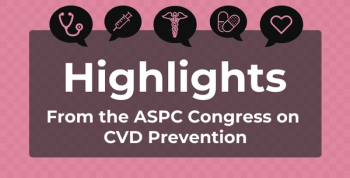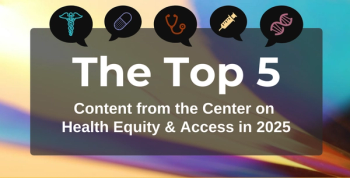
Contributor: How Balancing Compliance, Comprehension, and Privacy Can Optimize Access to Patient Data
In preparing for the upcoming implementation of the Interoperability and Patient Access final rule by CMS, best practices for health plans include prioritizing data mapping, sensitivity codes for privacy, and consumer-friendly language in accessible data for patients.
CMS has made clear its intent to provide patients access to their health information in a user-friendly format, when and where they need it. The
CMS further communicated their intent to advance the cause of interoperability when they released the
The federal push to liberate patient data requires a lot of work on the part of payers and their technology partners. In addition to modernizing legacy IT infrastructures, payers will need to be ready to shoulder the increasing burden of member transparency, and some payers are further along than others.
Plans should make no mistake that enforcement is coming and be prepared to do much more than check a box. Disparate and siloed data across health plan organizations will need to be completely transformed to achieve compliance but also to ensure sensitive patient information is protected and patients can understand the information being shared with them. Balancing compliance with patient comprehension and privacy is no small feat, but best practices are emerging.
Data mapping
CMS has identified FHIR as the key to unlocking valuable data for consumer and developer use and made clear its commitment to FHIR-based APIs in supporting the needs of patients and fueling innovation.
By July 1, payers must have in place a FHIR-based API that “allows patients to easily access their claims and encounter information, including cost, as well as a defined sub-set of their clinical information through third-party applications of their choice.” Further, as part of the
Health plans will need to have robust data management and governance strategies in place. First, a single source of reverential data is required for the accurate exchange of information through FHIR APIs. Second, the ability to map non-standard data to the common health care terminologies that are identified in the FHIR implementation guides will become an essential component of their interoperability strategy. In short, a FHIR terminology service with advanced data mapping capabilities will prove to be a strategic advantage as health plans strive to capture maximum value from their data.
Sensitivity codes for privacy
Certainly, the increased exchange of information will present new challenges to health data security and privacy. As health care organizations deploy the frameworks to support meaningful data sharing and greater care coordination across the continuum, one area that must not be overlooked is the compliant protection of sensitive health information. The mechanism for sharing data may be changing but the need to protect that data as it is exchanged remains the same.
Health plans may consider the use of sensitivity codes to help identify and filter sensitive diagnoses, procedures, labs and drugs across 6 key categories:
- substance abuse
- mental health
- family planning
- genetic testing
- HIV
- STDs
Sensitivity codes will require ongoing management and many payers are looking to experienced partners to fill that role.
Consumer-friendly descriptors for comprehension
Perhaps most important is acknowledging that for patients to act on their health data, they need to be able to understand it. The gap that exists between the language that clinicians and payers use and what patients understand is well known, but the Patient Access rule is forcing the issue to the fore.
The right strategy for effectively communicating with members and increasing transparency begins with terminology management that can generate consumer-friendly descriptions alongside industry codes within patient-facing documents. For instance, while a typical claim might designate a foodborne bacillus cereus intoxication, an accompanying consumer-friendly description would simply read food poisoning. These consumer-friendly descriptions may also be used in member portals,
Conclusion
By taking proactive steps to communicate with stakeholders—especially patients—payers can design and execute an implementation plan that not only satisfies the requirements of the Interoperability and Patient Access final rule but also moves the industry closer to the goal of putting patients truly at the center of health care.
Newsletter
Stay ahead of policy, cost, and value—subscribe to AJMC for expert insights at the intersection of clinical care and health economics.








































